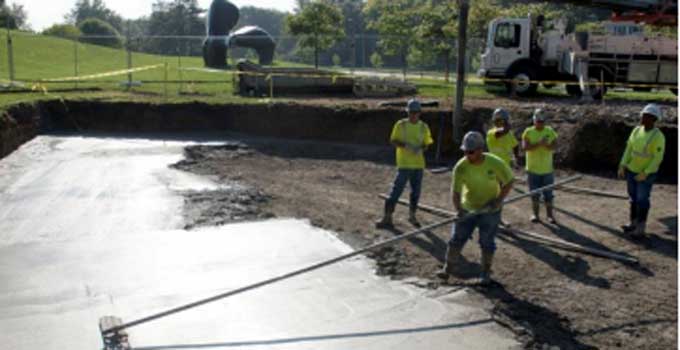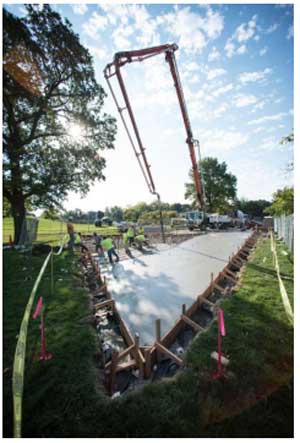At the Nelson-Atkins Museum of Art, installation of a glass-walled labyrinth designed by Kansas City native Robert Morris, his first permanent labyrinth in the United States, is going on. And its fitting, as Morris credits childhood visits to the Nelson-Atkins as nurturing his interest in art.
The triangular-shaped structure will be built in the Donald J. Hall Sculpture Park at the museum, as part of its 25-anniversary celebration.
Morris helped start the Process Art movement and is known for using industrial materials for sculptural works. According to the Nelson, “He used aluminum, steel, felt, string, mirrors and dirt to create transient works of art like Continuous Project Altered Daily, 1969. His felt series is a stunning example of the beauty he found in these unexpected and unconventional media.”
Here’s more from the museum:
Morris, who has credited childhood visits to the Nelson-Atkins as formative experience for his art, progressed naturally into the art of sculpture because of its interactive possibilities. His continued curiosity for the opportunities of viewer participation led to the creation of his Labyrinth series. Glass Labyrinth is the first permanent Robert Morris labyrinth installed in the U.S. These installations permit the viewer to experience his art from the inside out through the navigation of the piece. Glass Labyrinth will take this idea even further by allowing visitors to simultaneously encounter his art and the Sculpture Park through its transparent glass walls.
This dynamic sculpture will provide visitors with an intimate experience, enticing them to interact with the art by winding through the glass maze.
“The idea of a labyrinth as a place in which we lose ourselves in order to find ourselves is intriguing,” said Antonia Boström, Director, Curatorial Affairs. “This sculpture encompasses many things: engagement, participation, a spirit of theatricality, and also pushes boundaries between an art object and personal experience.”
While the labyrinth is a deceptively simple structure, its creation required a very large team and much ingenuity to see its realization. Construction began on the project last fall, under the leadership of Steve Waterman, Nelson-Atkins Director, Presentation and in collaboration with Erich Blohm Design, engineer for Robert Morris. A crew of more than 80 worked on the physical construction of the sculpture, with an additional crew of local and national companies involved in the planning and development.
The installation of Glass Labyrinth in the southeast section of the park marks the start of a six-month long celebration of the 25th anniversary of the Donald J. Hall Sculpture Park. The 62-foot by 62-foot by 62-foot, seven-foot-tall labyrinth, which weighs more than 400 tons, will be fully installed on May 22, when a public celebration will be held.
The installation of Glass Labyrinth begins a series of celebrations of the Sculpture Park that will include family activities, educational programs and special events.





Who’s talking